
About This Quiz
In a Gallup Poll conducted in the year 2000, Americans picked snakes as their number one fear. In fact, a full 51% of adults reported being afraid of these simple reptiles, more than the number who reported a fear of heights, public speaking or thunder storms. And yes, snakes like the black mamba or death adder can be pretty terrifying, but the vast majority of snakes are completely and utterly harmless. Of the 3,000 snake species on the planet, only around 7% could potentially kill or seriously injure a human, according to National Geographic. In fact, the University of Florida's Department of Wildlife estimates that people living in the U.S. are a whopping nine times more likely to be killed by lightning than to end up one of the 5 or 6 victims who die of snake bites each year.
So not only are most snakes unlikely to kill you - or even harm you at all - these mostly gentle animals are actually pretty intriguing if you give them a chance. With an incredible array of colors and patterns, these creatures can be stunning, and some species even make great pets for those seeking a companion.
Still not convinced that you want anything to do with snakes? Consider a move to Antarctica, Ireland, New Zealand, Iceland or Greenland, all of which are blessedly free of snakes of any kind. Before you pack your bags, take a minute to try your hand at this quiz to see how many snakes you can identify from a single image.

Slithering through the rain forests of Southeast Asia, the reticulated python ranks among the longest snakes on the planet, according to the St. Louis Zoo. While this diamond-patterned creature isn't venomous, it does pose a threat to humans because of its powerful constricting ability, which it uses to squeeze its prey to death.

No, members of the genus Chrysopelea can't actually fly, but these so-called flying snakes have figured out how to launch themselves from trees, curving their bodies back and forth to glide smoothly through the air. Found throughout Southeast Asia, these snakes, which measure between 2 and 4 feet long, can actually glide more effectively than flying squirrels, according to National Geographic.

The three dozen or so species within the rattlesnake family are all native to the U.S., and tend to be responsible for most snake bite deaths in the country. Species include the Eastern and Western Diamondbacks, Timber, Pygmy, Prairie and Mojave, all of which range between 4 and 8 feet in length, and have a characteristic rattle made from overlapping scales at the tip of their tail.
Advertisement

The Perth Zoo in Australia names the tigersnake as one of the world's deadliest snake species. It comes in shades ranging from black to gray or yellow, with alternative bands of color down its length. While this snake will raise up like a cobra when threatened, it's unlikely to attack unless it is threatened.

The boomslang is an attractive snake thanks to its large eyes and cool green color, but looks can be deceiving; this relatively small snake, which maxes out around 5 feet, can open its mouth almost 180 degrees to deliver a venom-loaded bite. You won't feet too bad at first, but you'll be dead within a few days of the encounter after bleeding out from every possible orifice, according to Scientific American.

One of the most common snakes found in U.S. waterways, the northern water snake ranges from gray to brown in color, and its dark markings make it easy to confuse with the much more dangerous copperhead. While this snake is non-venomous, it might bite if threatened, but poses little threat to humans, according to "National Geographic."
Advertisement

Despite its name, the black mamba is actually brown, but gets its name from the black coloring inside of its mouth. If you ever see this snake's mouth open, start running; it's one of the world's deadliest snakes, and a single bite can kill an adult in 20 minutes without treatment, according to National Geographic. Oh, and run fast, because this snake can slither at 12.5 mph.

Native to Central America, the eyelash viper is unique both because of its coloring, which ranges from yellow to pink or vibrant green, and because of the raised scales above its eyes that resemble eyelashes. While this forest-dwelling snake can deliver venom, it lives in such remote areas that it rarely comes into contact with humans, according to the Smithsonian National Zoo.
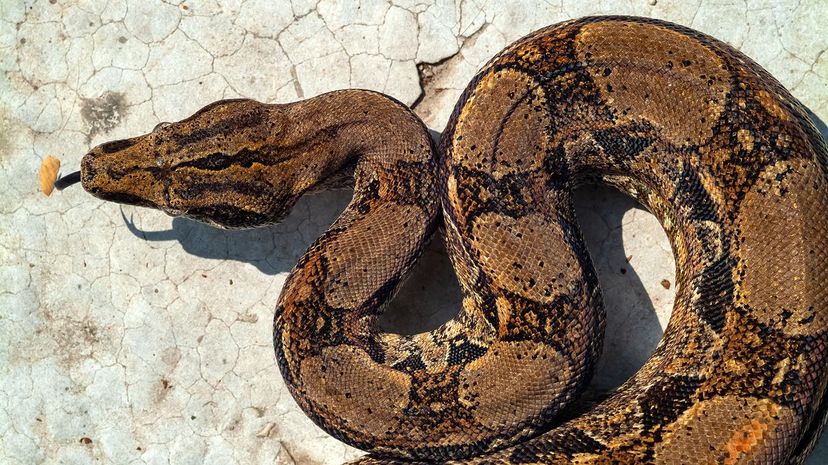
Hunted for its beautiful skin, which can features patterns of lines, circles or diamonds in shades ranging from yellow to brown, the Boa Constrictor is also a popular pet among snake lovers. Though non-venomous, this creature can measure more than 13 feet long and weigh more than a 100 pounds, allowing it to swallow fairly large mammals with ease. Another cool Boa fact - this snake gives birth to live babies, and can produce more than 50 at a time.
Advertisement

Also known as the common brown snake, the eastern brown snake can range from pale tan to chocolaty-brown, with a lighter orange or yellow underside. Found throughout eastern Australia, this snake is responsible for a large percentage of the nation's snake bite deaths, according to the Australian Reptile Park.

Native to southeast Asia and known to scientists as Ophiophagus hannah, the king cobra can be as long as 18 feet. It ranges in color from pale yellow to black, but all king cobras have the ability to flare out a "hood" around their head to appear larger when threatened. If that doesn't scare off a predator, the snake will sink its half-inch fangs into its victim, delivering enough venom to kill 20 people, according to The New York Times.
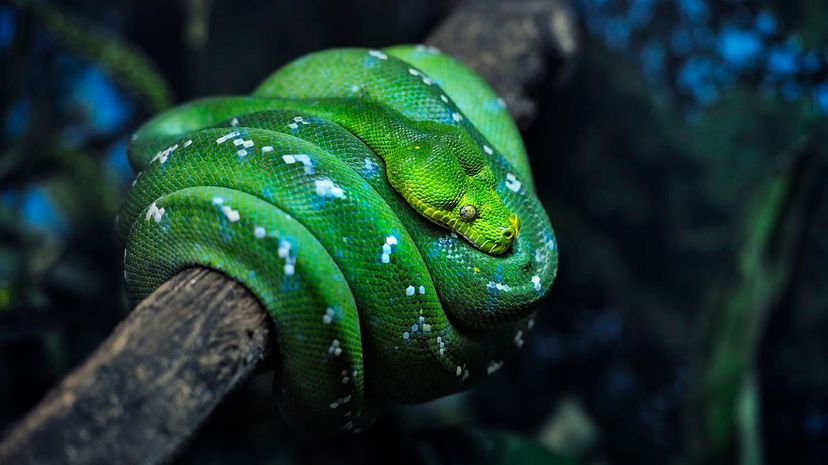
Named for its vibrant scales, which are bright green with white spots, the emerald tree boa calls the forests of South America home. Interestingly enough, this snake gives birth to live young, which start off red or orange before changing to green as they mature. Though non-venomous, this snake can grow to 6 feet or more in length, so it's best to keep your distance.
Advertisement

Copperheads live all over the eastern and central U.S., and generally range from 2 to 3 feet in length. Don't let that small size fool you, however, because this brown snake with its triangular head can deliver a venomous bite from the moment it's born. Though its bite is rarely fatal, according to the Smithsonian National Zoo, stay far away from any snake with hourglass-shaped markings down its back just to be safe.

So-named because it is native to the San Francisco area, the San Francisco garter snake is endangered due to development and loss of habitat. Non-venomous and less than 3 feet in length, this creature has turquoise scales and a brilliantly colored orange-red head, with more burnt-orange or orange-red spots along its body.

Ranging from 17 to 35 feet in length or even longer, the green anaconda is big enough to take down a big cat and swallow it whole, according to the Smithsonian National Zoo. Dark green with black and yellow spots, this snake has the ability to remain submerged in water for 10 minutes at a time while stalking its prey.
Advertisement

Born gray or brown, the black racer develops its deep inky color over time, except for chin and throat area, which remain bright white. Ranging from 3 to 5 feet in length, this fast-moving snake lives throughout the U.S.. While non-venomous, it does project a distinctly musky odor when threatened.

The four-lined or rat snake has a yellow-brown body with four darkly-colored stripes running from head to tail. Non-venomous, this snake known to scientists as Elaphe Quatuorlineata is relatively calm and non-aggressive to humans.

While known for being aggressive, the rock python of Sub-Saharan Africa is thankfully non-venomous. Sadly, this snake can easily kill by squeezing or constricting, as evidenced by the death of two children killed in 2013 by a rock python that escaped from a pet store in New Brunswick, Canada.
Advertisement

Native to Africa and southeast Asia, the saw-scaled viper gets its name from the rough, raised scales along the sides of its body. Ranging in color from brown to orange or gray, this venomous snake species can measure as long as 3 feet. While it will make a sizzling sound to warn off potential threats, predators that refuse to heed this snake's warning may suffer a powerful and possibly deadly bite.

Known to scientists as Thamnophis sirtalis, the eastern garter snake is a common sight in North America, even in populated areas. It can range in color from green to black, and generally has a single yellow stripe running the length of its body, which is usually between 2 and 5 feet, according to the University of Georgia Herpetology Program. And in case you are wondering, this snake is totally harmless to humans.

Found on the east coast of Canada and the U.S., the Massasauga is endangered thanks to habitat destruction, according to the U.S. Fish and Wildlife Service. This venomous species of rattlesnake is usually under 3 feet long, and has a brown to gray body with a deep black belly.
Advertisement

Thank goodness the blue krait prefers to venture out at night rather than by day, because this snake with characteristic deep blue-black and white banding packs a powerful venom into its bite. Found in southeast Asia, this species measures up to 6 feet long and is sometimes known as the Malayan krait.

Black rat snakes range from 3 to 7 feet, and are totally black in color with the exception of the belly, chin and throat. Non-venomous according to the National Wildlife Federation, this snake is part of the same family as the Texas rat snake, which looks the same, but has lighter brown scales rather than black.

Found throughout all of the United States with the exception of the dry southwestern states, the Common Garter Snake measures less than 4 feet in length and weighs less than a pound. It prefers to live near water, is harmless to humans, and has three stripes running down its body, which can range from very pale to deep brown.
Advertisement

Its vibrant red or orange underside gives the redbelly snake its common name. Found all over the U.S. and Canada, this small reptile has a pair of strange habits; not only will it curl its lip to intimidate its enemies, but it has also been known to play dead - flopping over on its back and letting its tongue hang out to convince predators to go away.

Found all over the Americas, the two dozen species of milk snake range from 1 to 6 feet in length. Most have black banding to separate larger sections of orange-red and tan scales, which can fool some into thinking that this species is actually the more dangerous coral snake.

Whether you call it a cottonmouth or water moccasin, call it from far away to prevent any attacks by this venomous snake ... the only venomous water snake in the U.S., according to the University of Georgia's Herpetology Program. Two to 4 feet long and yellow to black in color, the cottonmouth has vertical eye slits like a cat, which is one of the most effective ways to tell it apart from similar looking non-venomous snakes.
Advertisement
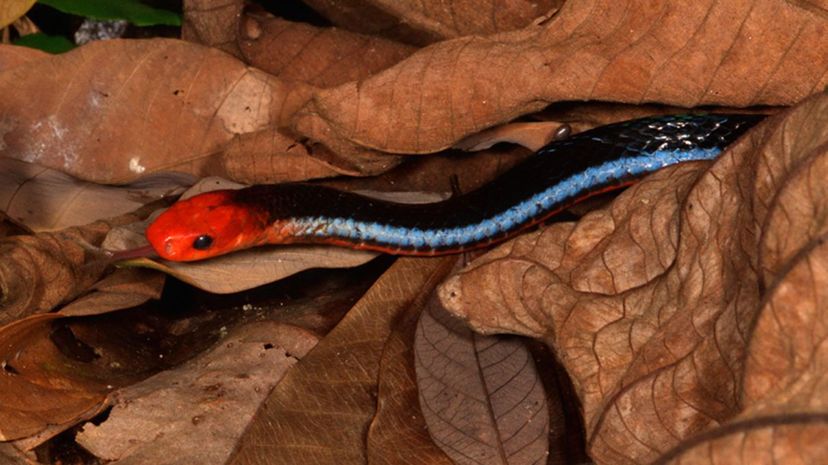
Calliophis bivirgata, or the blue coral snake, features a brilliant turquoise body and red-orange head and tail. Named because it resembles some of the spectacular colors found in coral, this land-dwelling snake from southeast Asia can kill with a single bite, and has venom so powerful that scientists are using it to study toxicology and antivenom, according to a 2016 study published in the Journal of Proteomics.

The pine snake is colored just right to blend in with the needles and other debris that makes up the floor in a pine forest. Up to 6 feet in length, this snake has a small, turtle-like head, and lays the largest eggs of any North American snake, according to the University of Georgia's Herpetology Program.

Beware the Inland Taipan, which is also known simply as the small-scaled or fierce snake. This shy, light brown Australian snake is so deadly that a 17-year old who managed to survive a Taipan bite in 2012 made headlines, and left scientists scratching their heads, according to an article in the Sydney Morning Herald.
Advertisement
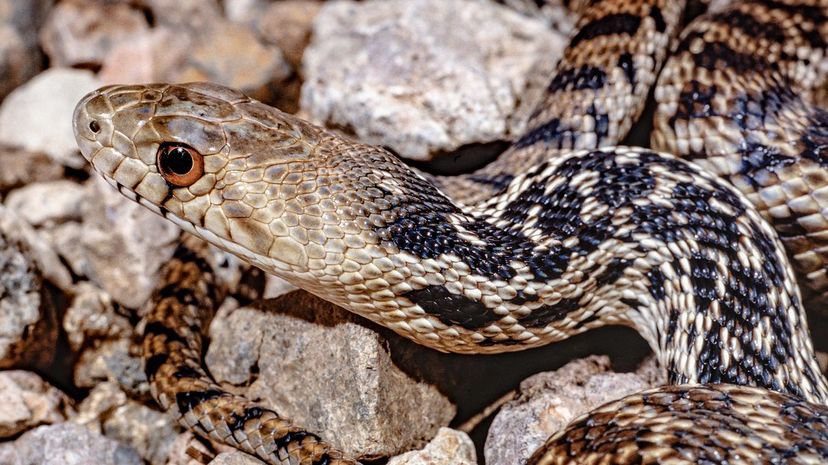
Yellow or black with brown spots along its back, the bull snake lives in burrows throughout the central U.S. and Canada. While it's commonly mistakenly for a rattlesnake, and indeed it does beat its tail on the ground to create a similar sound, this non-venomous snake is not part of the rattler family and poses no real danger to humans.

There's no snake like the Brazilian rainbow boa, which has iridescent skin that shimmers with all the colors of the rainbow as it reflects the light. Found around the Amazon River, this snake is non-venomous and rarely grows more than 6 feet in length.

Despite its name, the death adder rarely kills anyone, and is only likely to bite humans who try to attack it or handle it, according to the National Aquarium in Baltimore. Three feet long with golden stripes, the scientific name of this Aussie native is Acanthopis praelongus.
Advertisement

The upturned "snout" of the hog-nosed snake gives this creature its unique name. Measuring up to 2 feet in length, this North and South American reptile ranges from gray to brown or red, and often has patterns of black splotches on its back.

Getula californiae, or California kingsnakes, have colorful ringed bodies in shapes of yellow, white red, blue and black. They may hiss or vibrate to make noise when threatened, but their last resort is to simply curl into a ball with their head buried at the center for safety.

Native to the southern and eastern U.S., the corn snake is a type of rat snake that is typically red or orange with black-lined markings along its back. While this harmless snake might resemble a copperhead, it's easy to tell the difference; while corn snakes can have various patterns of markings, the markings on the back of a copperhead are shaped like an hourglass.
Advertisement

The banded sea krait swims the seas around the Indian and Pacific oceans, returning to land to lay its eggs. While this venomous snake can pack a dangerous bite, attacks are rare. Oceana reports that most bites by this snake take place when the krait gets caught in a fishing net and comes across a very unlucky fisherman.
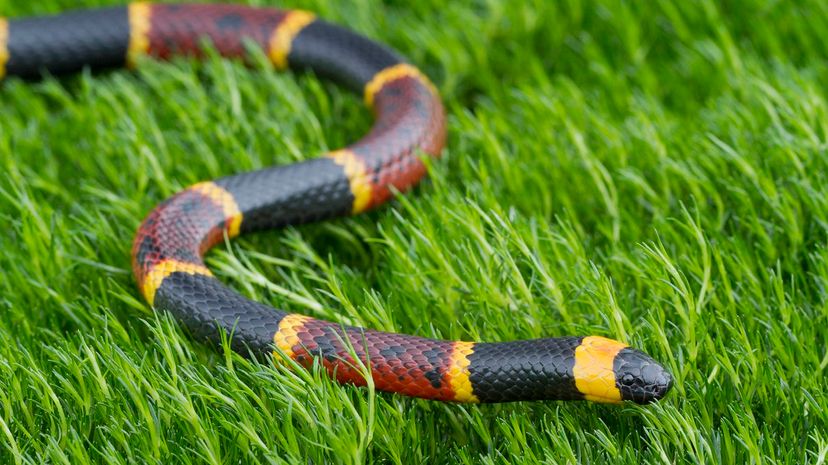
One of four venomous snakes native to the U.S., the coral snake is found throughout the southeastern part of the country. While several snakes have similar banding to this species, the real secret to identification lies not in remembering rhymes but in examining the nose. The deadly coral snake has a black nose, while similar non-venomous species will not, according to the Florida Museum at the University of Florida.

Thamnophis saurita, or ribbon snakes, are common and completely harmless to humans. Found all over the eastern U.S., this snake has three stripes down its back, a yellow to white belly and is between 1 and 2 feet in length, according to the University of Georgia's Herpetology Program.
Advertisement

Measuring 2 to 3 feet in length and found throughout the eastern United States, the rough green snake has textured scales in various shades of light of bright green. While it doesn't bite or contain any venom, this species is very active by day, good at climbing trees and a great swimmer, according to the Chesapeake Bay Program, so it's not unusual for it to come into contact with humans.